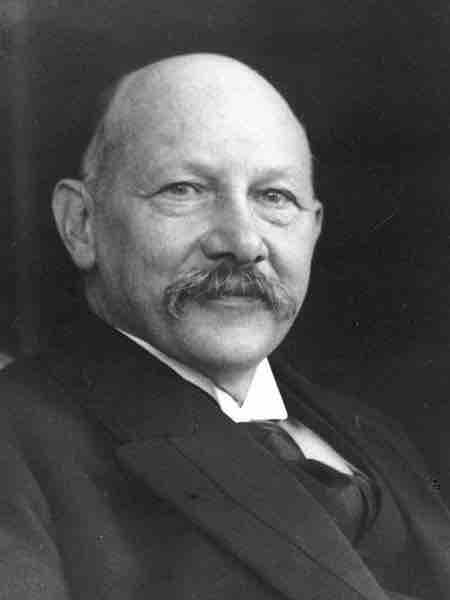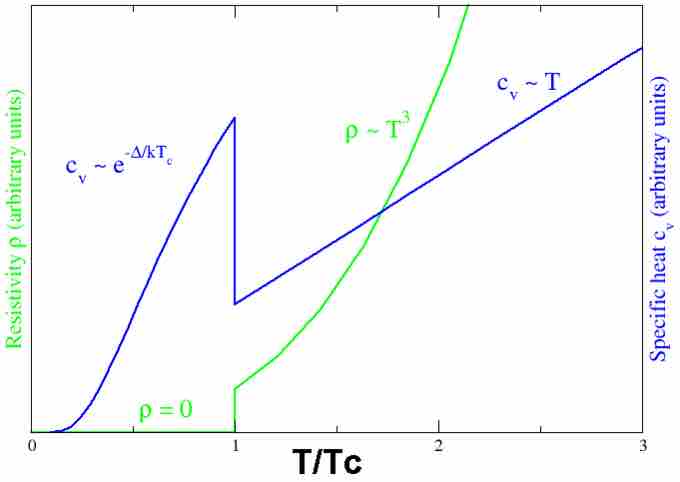Superconductivity is a phenomenon of exactly zero electrical resistance and expulsion of magnetic fields occurring in certain materials when cooled below a characteristic critical temperature. It was discovered by Heike Kamerlingh Onnes (shown in ) on April 8, 1911 in Leiden.

Heike Kamerlingh Onnes
Heike Kamerlingh Onnes (1853-1926).
Most of the physical properties of superconductors vary from material to material, such as the heat capacity and the critical temperature, critical field, and critical current density at which superconductivity is destroyed. On the other hand, there is a class of properties independent of the underlying material. For instance, all superconductors have exactly zero resistivity to low applied currents when there is no magnetic field present or if the applied field does not exceed a critical value. The existence of these "universal" properties implies that superconductivity is a thermodynamic phase, and thus possesses certain distinguishing properties that are largely independent of microscopic details.
In superconducting materials, the characteristics of superconductivity appear when the temperature T is lowered below a critical temperature Tc. The onset of superconductivity is accompanied by abrupt changes in various physical properties—the hallmark of a phase transition. For example, the electronic heat capacity is proportional to the temperature in the normal (non-superconducting) regime. At the superconducting transition, it suffers a discontinuous jump and thereafter ceases to be linear, as illustrated in .

Superconducting phase transition
Behavior of heat capacity (cv, blue) and resistivity (ρ, green) at the superconducting phase transition.
When a superconductor is placed in a weak external magnetic field H, and cooled below its transition temperature, the magnetic field is ejected. The Meissner effect does not cause the field to be completely ejected. Rather, the field penetrates the superconductor to a very small distance (characterized by a parameter λ), called the London penetration depth. It decays exponentially to zero within the bulk of the material. The Meissner effect is a defining characteristic of superconductivity. For most superconductors, the London penetration depth is on the order of 100 nm.
Superconductors are also able to maintain a current with no applied voltage whatsoever—a property exploited in superconducting electromagnets such as those found in MRI machines. Experiments have demonstrated that currents in superconducting coils can persist for years without any measurable degradation. Experimental evidence points to a current lifetime of at least 100,000 years. Theoretical estimates for the lifetime of a persistent current can exceed the estimated lifetime of the universe, depending on the wire geometry and the temperature.
The value of this critical temperature varies from material to material. Usually, conventional superconductors have critical temperatures ranging from around 20 K to less than 1 K. Solid mercury, for example, has a critical temperature of 4.2 K. As of 2009, the highest critical temperature found for a conventional superconductor is 39 K for magnesium diboride (MgB2), although this material's exotic properties cause some doubt about accurately classifying it as a "conventional" superconductor. High-temperature superconductors can have much higher critical temperatures. For example, YBa2Cu3O7, one of the first cuprate superconductors to be discovered, has a critical temperature of 92 K; mercury-based cuprates have been found with critical temperatures in excess of 130 K. It is of note that the chemical composition and crystal structure of superconducting materials can be quite complex, as seen in .

Unit Cell of YBaCuO superconductor
Unit Cell of YBaCuO superconductor. Atoms are indicated with different colors.